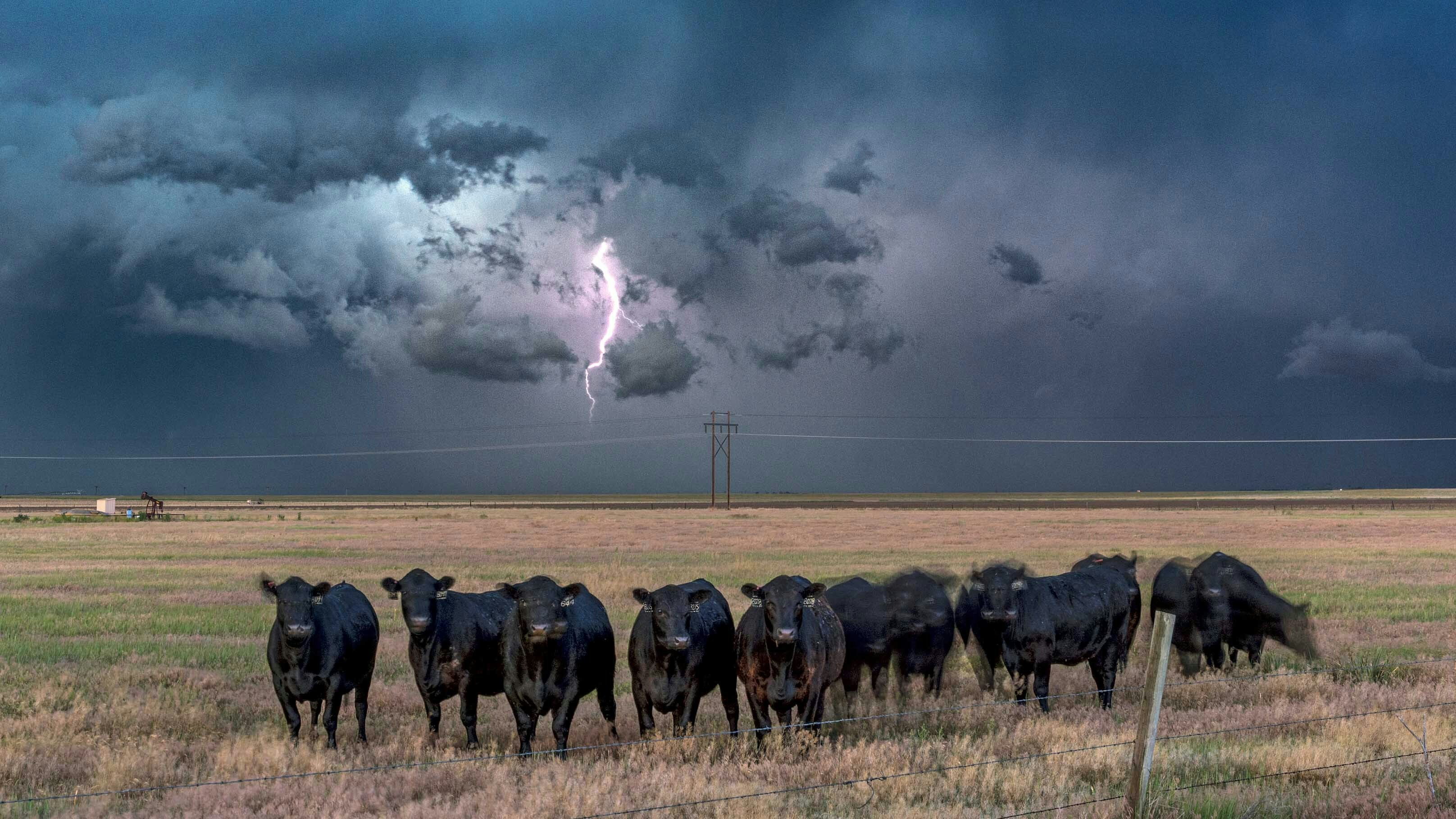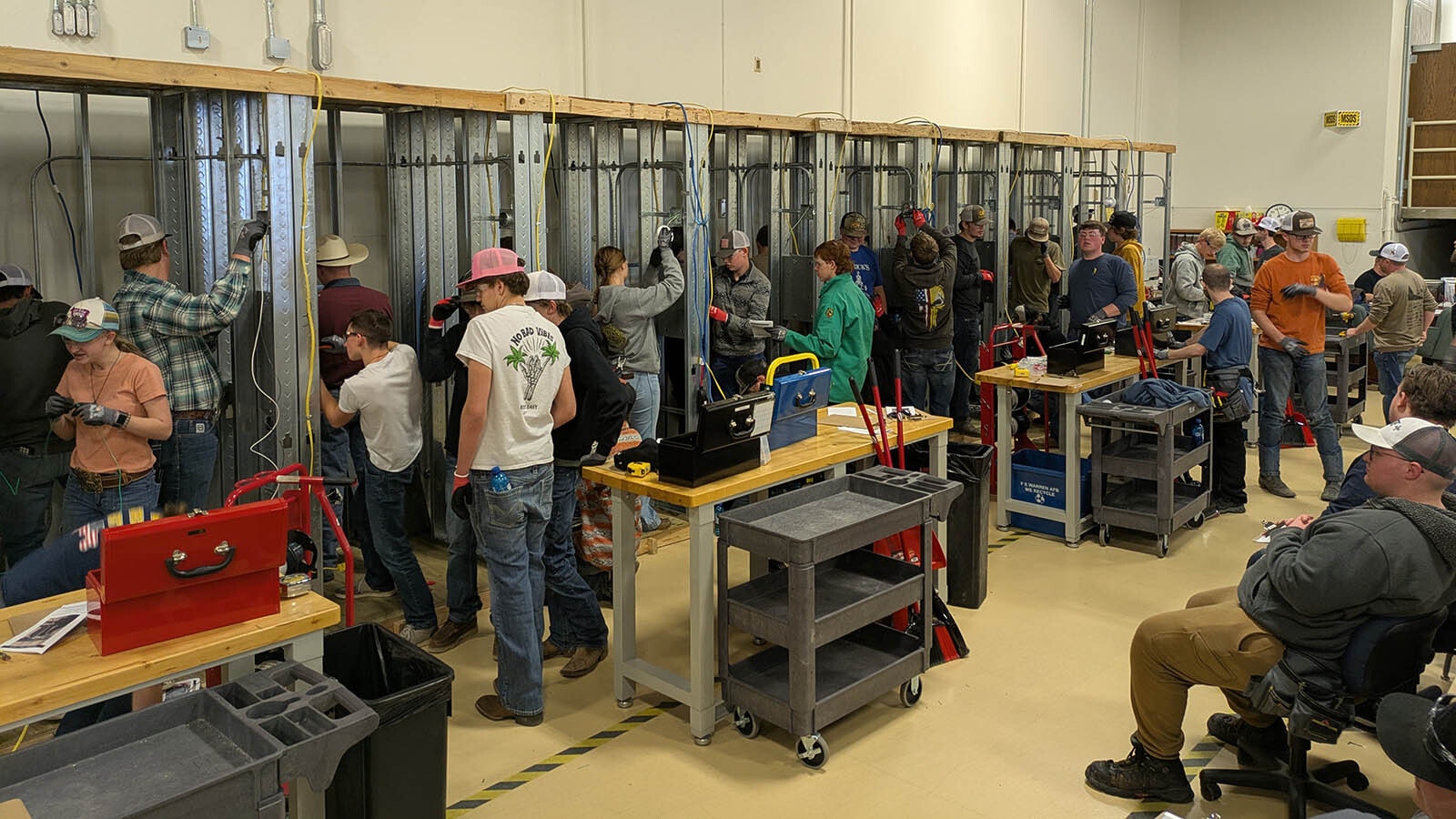Given that Wyoming has recently approved an Outdoor Recreation Trust Fund to build out new tourism opportunities for communities across the state, it might seem like this week’s Emerging Issues Forum, Outdoor Recreation, Build It The Way We Want It event was prompted by that.
But the forum was in the works long before the Wyoming Legislature approved House Bill 74, which Gov. Mark Gordon signed into law March 8.
“That was just nice timing,” WORTH Initiative Interim Director Dan McCoy told Cowboy State Daily. “It was just with everything that’s going on in outdoor recreation the last couple of years. It’s starting to build, so we wanted to bring people together around this.”
Bring people together it did. About 200 stakeholders came to Laramie for the conference from all corners of the Cowboy State to take on the large issues that lie ahead for this slice of the tourism pie.
They came from Sheridan County’s Big Horn Mountains and the Shoshone Conservation District. They came from Casper, Cheyenne and Jackson.
And they came from Lander, where many still recall how the Johnny Behind the Rocks trail system started as a series of illegally built mountain bike trails.
If You Don’t Build It, They’ll Still Come
Illegal trail-building brings up a point that Wyoming State Parks and Cultural Resources Acting Director Dave Glenn wanted everyone at the conference to consider.
If there’s no trail, tourists find ways to make their own, he said.
No campground? No problem, the tourists will just “boondock” it, he said, which refers to staying in a remote location that has no electricity, water or sewer infrastructure.
“You’re either on the bus driving the bus, or you’re getting run over the bus,” Glenn said.
In this case, that oncoming bus is a booming outdoor recreation industry that surged in the wake of the pandemic to a huge $862 billion across the nation.
The enthusiasts fueling that bus are looking for their next great outdoor recreation adventure, and Wyoming, with its beautiful, rugged mountains and one-of-a-kind Western adventures, is a prime target.
As the Cowboy State’s communities have already seen, the fact that a community isn’t ready for this tidal wave of interest in their outdoor recreation opportunities doesn’t mean those tourists won’t show up anyway.
“This is our time right now,” Glenn said. “And I, for one, would much rather hop in the driver’s seat.
“We need to figure out how to educate these people when they’re coming in. We need to disperse them across communities, to provide different outdoor recreation opportunities that those communities want. And we need to concentrate them at times (in the right places).”
That set the framework for the overall conference, which considered everything from helping under-utilized communities that want to grow their outdoor tourism recreation to managing the impact of tourism in areas where community members feel there’s already too much going on.
Don’t Kill The Goose
Quality of life isn’t just about outdoor recreation tourism, Wyoming Business Council Chief Operating Officer Amy Grenfell said during a panel on changes that are already happening to Wyoming’s outdoor recreation.
“We constantly hear from businesses in other states saying, ‘We want to be in Wyoming because our employees, our workforce, wants to have access to all these things that you have,’” she said. “So, it’s kind of a funny scenario that Wyoming is in, in that we have the opportunity to grow because of our outdoor recreation.
“But then, how do we manage it?” she asked. “And that’s what we’re talking about today, to make sure that we still maintain what’s desirable about our great outdoors and our wide open spaces.”
Not killing the goose that’s laying all the golden outdoor recreational eggs is a serious concern, said Patrick Harrington, manager of Wyoming Outdoor Recreation. What he’s striving to help communities do is stretch their existing capacity.
“If you had 400,000 people using a trail this year, and you can half the level of impact from that, then the trail could experience 800,000 guests at roughly the same level of impact,” he said. “That stretches our capacity.”
Trails can be built, for example, in such a way that hikers don’t really see each other. That gives the illusion that one is still enjoying a secluded space, even though the trail actually has many visitors.
Another tactic is dispersion, which refers to educating tourists about lesser-known opportunities to help alleviate pressure on an over-used area, he said.
Other times, though, the strategy is opposite that. Concentrating tourists to an area that can handle use, as opposed to letting them disperse into areas that may be unable to handle it.
“So, we’re not going to put a campground in the middle of the Red Desert where there’s nothing else for 20 miles,” he said. “What we might do is move 20 miles away, to places that can handle that type of use. Then invite those guests and build resilient landscapes that can support an increase in use.”
Proactive Vs Reactive
There are still a lot of details to work out about how the Outdoor Trust Fund is going to work, Glenn told conference attendees during a panel on how to pay for outdoor recreation tourism.
“We kind of had it set up on how that was going to be created and how much money was going to be spent and how it was going to work,” Glenn said. “But essentially, that was gutted out of the bill.”
How the trust fund is going to work is a topic for the future, Glenn said, but one thing that is exciting about the fund is the opportunity for communities across the state to be more proactive, versus reactive, about their communities’ outdoor recreation opportunities.
Mike Kusiek, executive director of Wyoming Pathways, has been working for quite some time in the proactive outdoor recreation. He was part of efforts to implement a trail in Jackson about 11 years ago.
“That was something that folks had wanted for a long time and people discovered, by golly, this is pretty nice,” he said. “We can walk and ride our bikes and do things without cars.”
Since then, the miles of trails have grown to somewhere around 130, Kusiek said. That success has led other municipalities to say they want some of the same for their communities.
Among recent examples Kusiek was involved with are a downhill mountain bike slope in Lander, designed to separate mountain bikers from other, incompatible trail users, as well as a soft-surface, multi-use trail in Thermopolis that leads directly from the city to an outlook known as Round Top and the ever-popular Hot Springs.
A key to this process, Kusiek said, has been engaging the community and cultivating relationships with land managers.
“There are housing issues, and we’re all kind of fighting the same fight,” Kusiek said. “And that relationship means I’m going to get that land manager some wins. I want to help them look good in their community with their boss.
“And then we go about the business of finding funding.”
Skin In The Game
One of the funding issues that Kusiek, Glenn and other panelists talked about is how outdoor recreation is funded.
“In the outdoor rec world there’s 100 of us asking for money,” Kusiek said. “We want more shooting ranges, we want better access for fishing, we want snowmobile rides — whatever people want, it all costs money. That money has to come from somewhere, and that’s a big challenge.”
Trails and outdoor recreation opportunities have typically been built off of donations or tax revenues that don’t come from the actual users of the trails, Kusiek acknowledged. That’s hampering efforts to grow funding for this sector of tourism.
“One of the first questions asked at TRW this session by Rep. (Donald) Burkhart from Rawlins — and he’s well aware of our projects and really wants to work with this — but he literally asked how much mountain bikers pay. Well, that’s zero,” Kusiek said.
That has led to some creative funding strategies across the Cowboy State. In Teton County, for example, voters approved a specific-purpose tax to fund pathways.
WYldlife For Tomorrow, meanwhile, is an initiative that seeks to raise money from businesses that benefit from wildlife tourism to bolster habitats under the umbrella of the WYldlife Fund, a nonprofit partner to the Wyoming Game and Fish Department and Commission.
Even with the Outdoor Recreation Trust Fund that’s been established, there are still questions about funding and, as several panelists pointed out during the three-day conference, other states with outdoor recreation opportunities are already spending a lot more than the Cowboy State is on developing outdoor rec opportunities.
Glenn suggested funding will continue to be a hot discussion item, but in his view, skin in the game for those consuming the resource is key.
“Even if it’s not a lot of money,” he said. “They do need to get skin in the game.”
Renee Jean can be reached at: Renee@CowboyStateDaily.com





